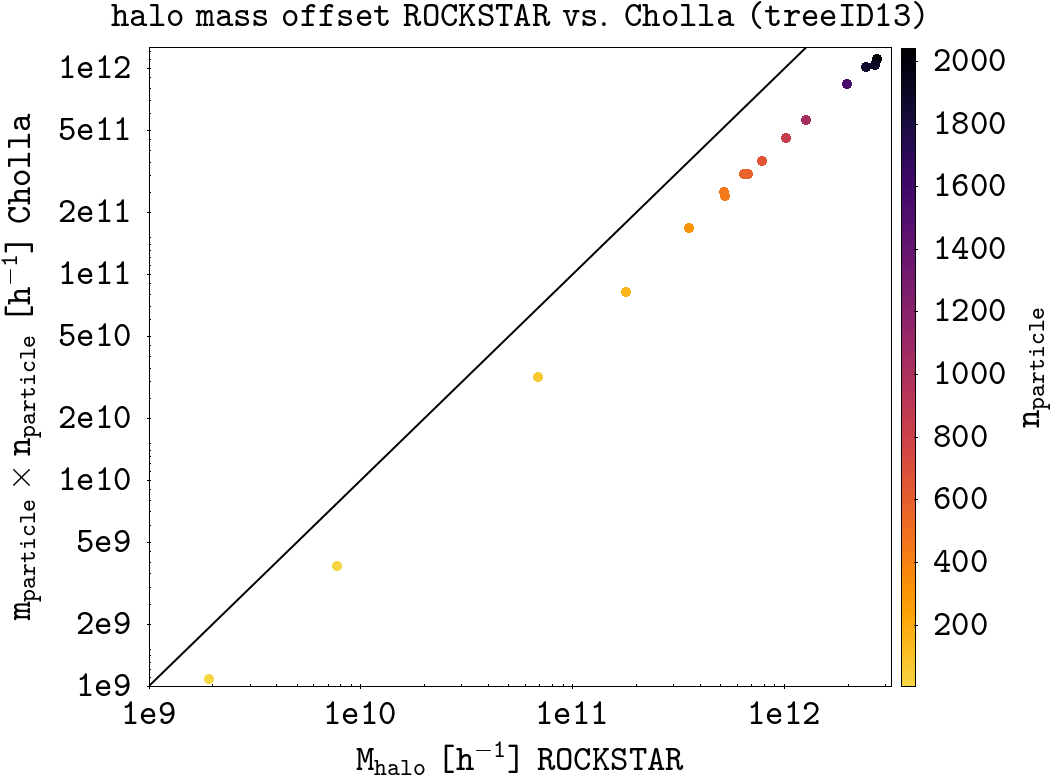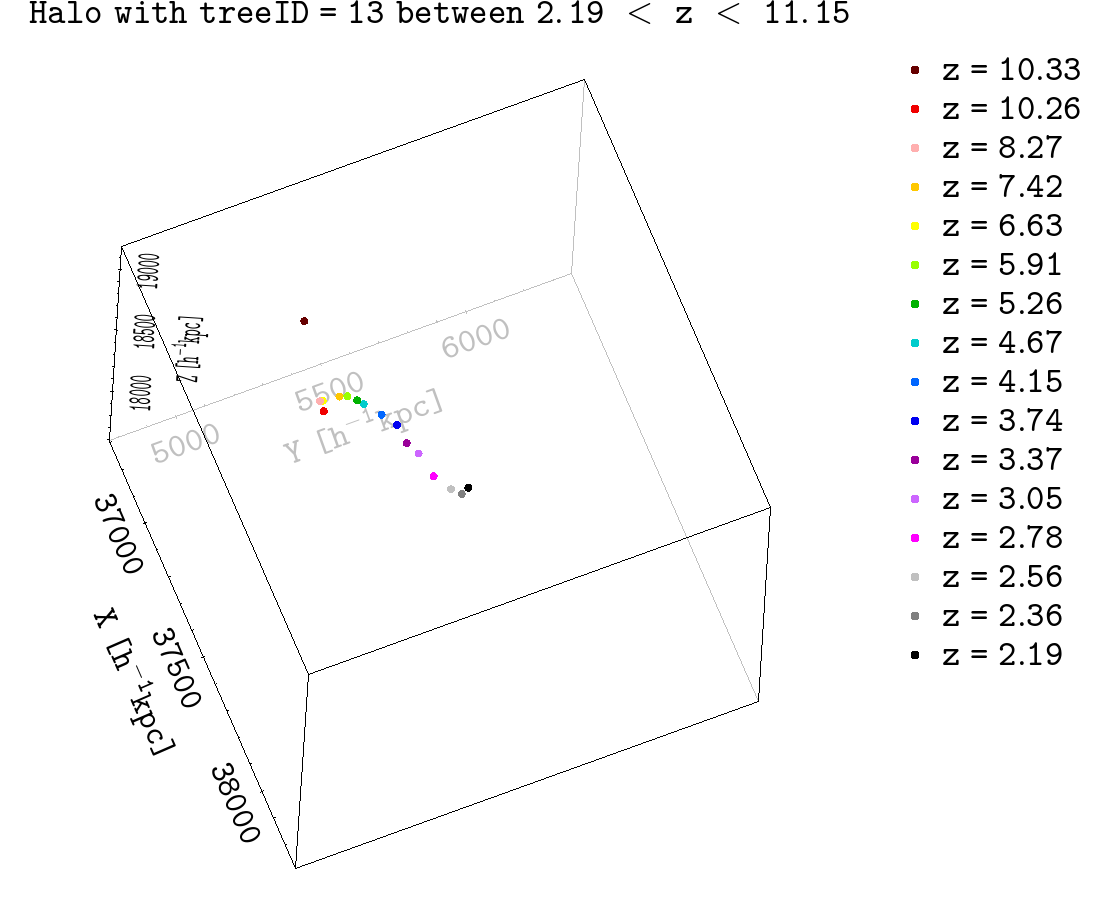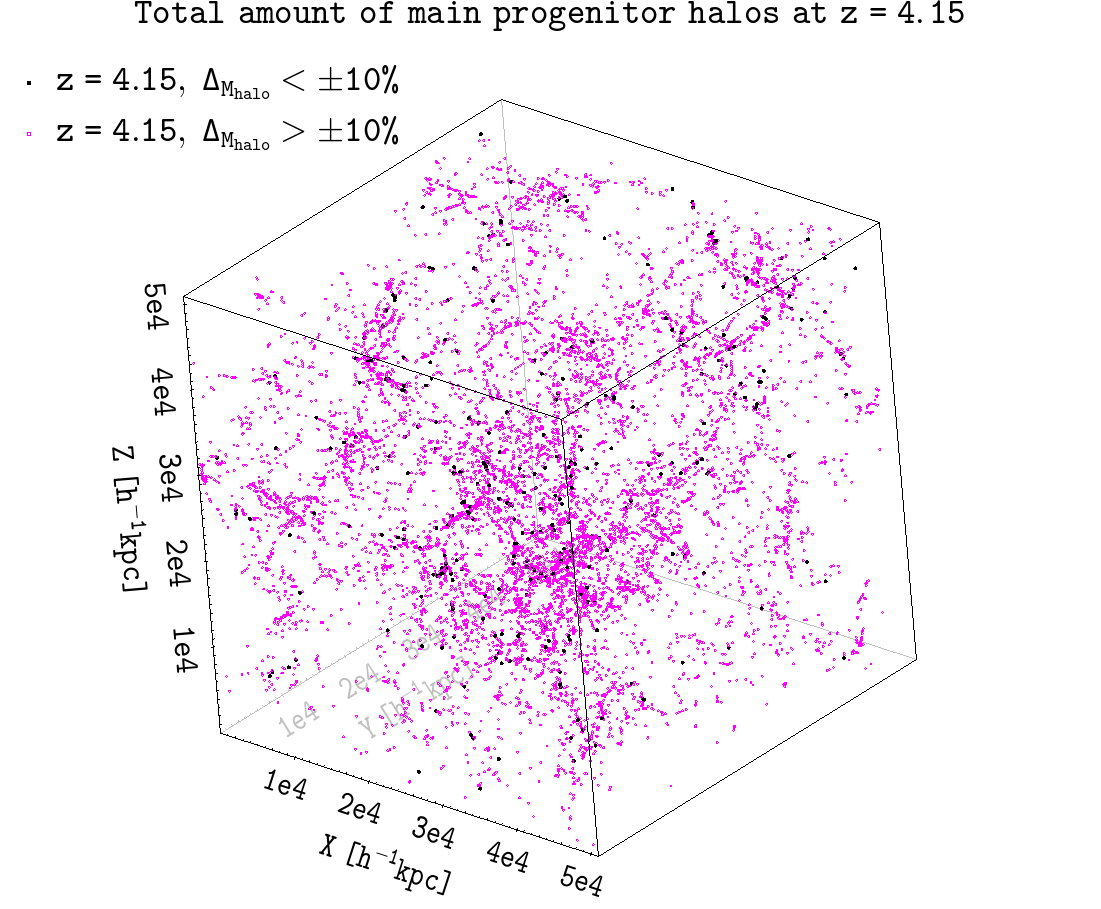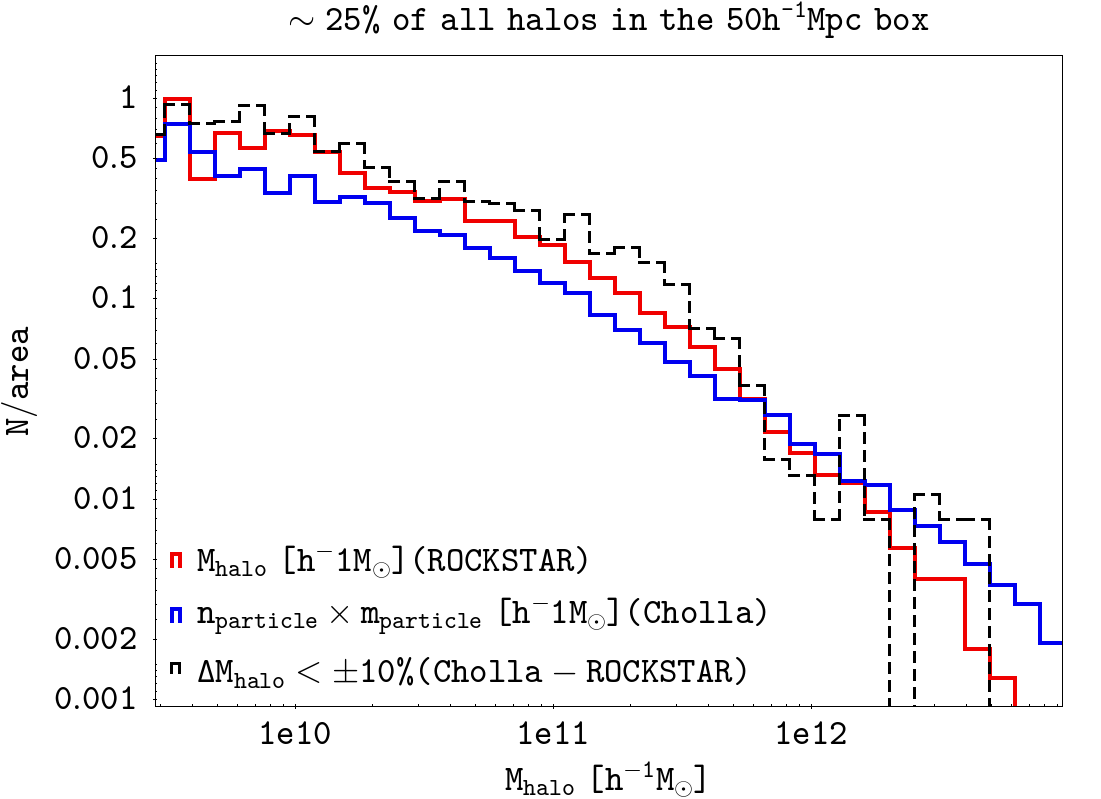D. Stoppacher's personal webpage
Personal research and project web page
A testrun on merger trees part II
Summary:TBA
This is the continuation of the post from 2021-01-07. The following questions are still open will be discussed in this post.
- Verify the approach of connection halos by the provided haloid and descID by comparing directly with the numbers of particle assigned to the halos between snapshots.
- How does ROCKSTAR assign the descID when running?
- Calculate halo mass function and accretion rates.
Task1: Merger tree verification
The example of merger tree treeID13
In this analysis we scanned through the entire box of Cholla with side-lenght 50\(h^{-1}\)Mpc and a resolution of \(256^3\). We approximate the halo mass of Cholla buy gathering all dark matter particles within a certain radius (e.g. \(5\times\) the virial radius \(R_{vir}\)). Then we multiplied the number of particel \(n_{particle}\) by the mass of one dark matter particle in the simulation being \(m_{DM}=5.407\times 10^8\) \([h^{-1}M_{\odot}]\). We compare this result with the halo mass the halo finder ROCKSTAR provided. In Figure 1 we show the offset between the two halo masses on the x-axis for ROCKSTAR and on the y-axis for Cholla. The differences are up to \(\pm50\%\) in masses. Figure 2 gives a detail list of the data plotted in Figure 1.


Although the difference in halo masses are significant high, we can still confirm that ROCKSTAR sets the descIDs correctly. In Figure 3 we illustrated that by tracking the position of the main progenitor halos of treeID13 between \(2.19<z<10.33\).

Positions of all main progenitors at z=4.15

Halo mass function (HMF) of all main progenitors at z=4.15

Position of all main progenitors between 2<z<11

Halo mass function (HMF) of all main progenitors between 2<z<11
